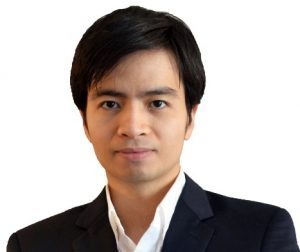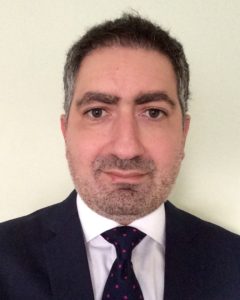 Abstract: My research is aimed at creating materials that will be the building blocks of economical, large-scale, clean energy technologies of the future. The key to creating effective energy conversion materials is controlling the flow of energy, matter and electricity at the nanoscale by careful design of the shape, size and composition of materials at the same scale. I am primarily interested in developing materials for cheap yet efficient solar cells that either generate electricity or directly generate chemical fuels. As an example, I will present semiconductor/liquid junction solar cells constructed on metal oxide nanowire scaffolds that achieved record photocurrents, and also new results on metal sulfide materials. Equally important is the development of methods for the rapid, economical synthesis of highly structured nanomaterials in quantities that match the scale of our energy problem. As an example, I will describe novel flame-synthesis methods for the bottom-up growth of arrays of single-crystal metal oxide nanowires and composites over large areas on electrically conductive substrates. Technologies like this may someday remove barriers to the practical implementation of nanotechnology in solar energy conversion devices.
Abstract: My research is aimed at creating materials that will be the building blocks of economical, large-scale, clean energy technologies of the future. The key to creating effective energy conversion materials is controlling the flow of energy, matter and electricity at the nanoscale by careful design of the shape, size and composition of materials at the same scale. I am primarily interested in developing materials for cheap yet efficient solar cells that either generate electricity or directly generate chemical fuels. As an example, I will present semiconductor/liquid junction solar cells constructed on metal oxide nanowire scaffolds that achieved record photocurrents, and also new results on metal sulfide materials. Equally important is the development of methods for the rapid, economical synthesis of highly structured nanomaterials in quantities that match the scale of our energy problem. As an example, I will describe novel flame-synthesis methods for the bottom-up growth of arrays of single-crystal metal oxide nanowires and composites over large areas on electrically conductive substrates. Technologies like this may someday remove barriers to the practical implementation of nanotechnology in solar energy conversion devices.
Biographical Sketch: Pratap Rao is an Assistant Professor in the Mechanical Engineering Department at the Worcester Polytechnic Institute (WPI). He received his BS in 2007 from WPI and his PhD in 2013 from Stanford University. He has co-authored 27 peer-reviewed papers that have collectively been cited over 1,700 times. His work on materials for solar energy conversion and electrocatalysis is currently funded by the National Science Foundation and the Massachusetts Clean Energy Center. At WPI, he is the recipient of the Mechanical Engineering Excellence in Research Award and the James Nichols Heald Research Award.





 Yongming Liu, Assistant Professor
Yongming Liu, Assistant Professor
 ermal properties with microscale spatial resolution and sub-picosecond temporal resolution. Examples include: 1) TR-MOKE as a novel way to explore the origins of the anisotropic thermal transport in black phosphorus with enhanced measurement sensitivity; and 2) nanoparticle-assisted localized heating for probing interfacial thermal resistance at nanometer scales.
ermal properties with microscale spatial resolution and sub-picosecond temporal resolution. Examples include: 1) TR-MOKE as a novel way to explore the origins of the anisotropic thermal transport in black phosphorus with enhanced measurement sensitivity; and 2) nanoparticle-assisted localized heating for probing interfacial thermal resistance at nanometer scales. Design for Discovery: Structural Shape & Topology Optimization with a Level Set Approach
Design for Discovery: Structural Shape & Topology Optimization with a Level Set Approach
